Flower Counts
Everybody likes flowers!
Counting flowers is fun, it also provides an estimate of the amount of energy allocated to reproduction.
Not every flower results in a viable seed and certainly not every seed grows up into an new individual. So counting flowers does not tell you how much the population is changing, but it does tell you how much effort is going into reproduction.
In the Arctic the cold temperatures put a constraint on flower and especially seed production.
Arctic heather (Cassiope tetragona) is a common evergreen shrub of the tundra. It has many flowers. You can see that tracking the flowers is better with temperature (expressed as Thawing Degree Days) than Day of they year.
The figures below are counts of flowers from Utqiaġvik, Alaska. The counts are the average number of flowers in a 1 meter square plot. Note each color line represents a year and open circles are warmed plots whereas closed squares are ambient control plots.
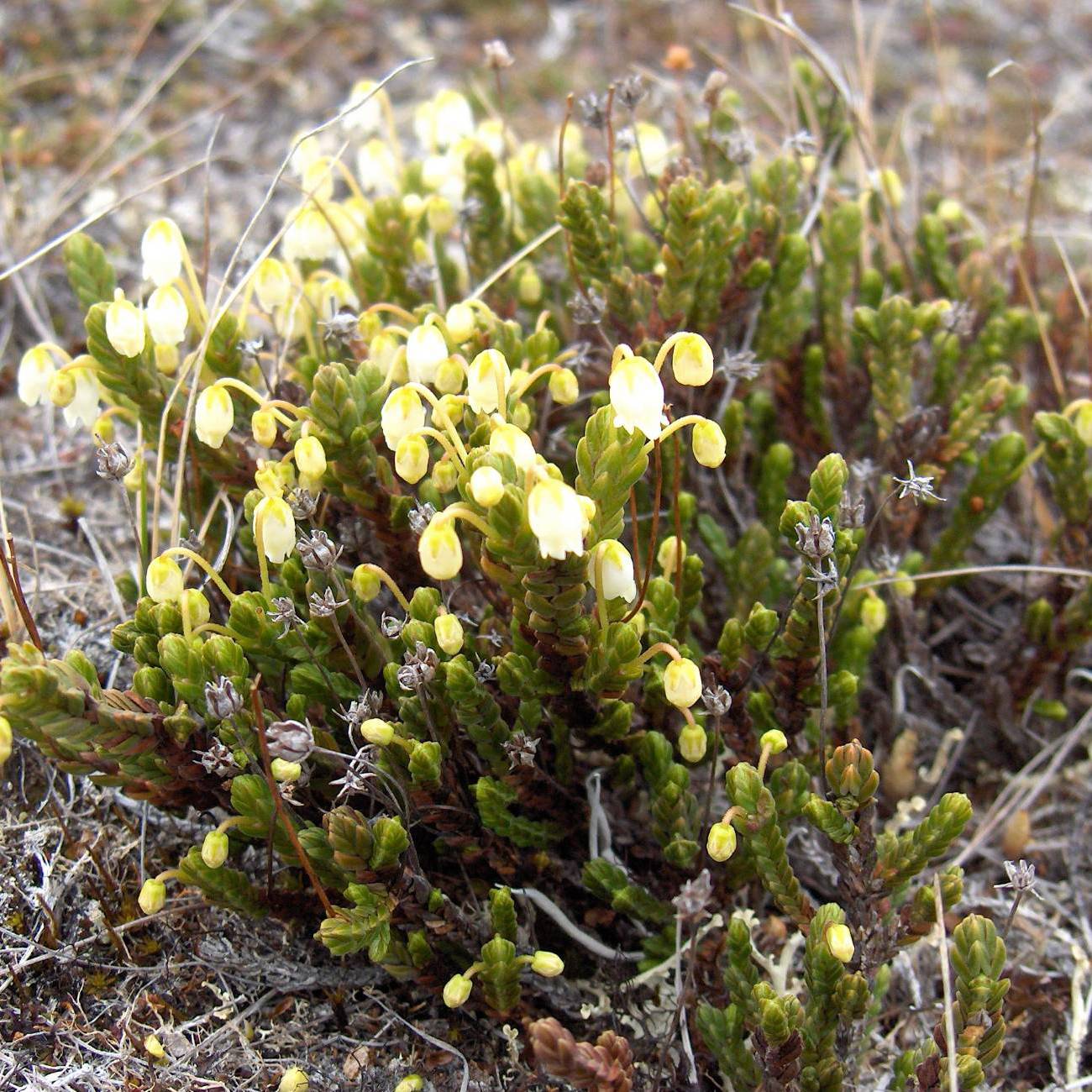
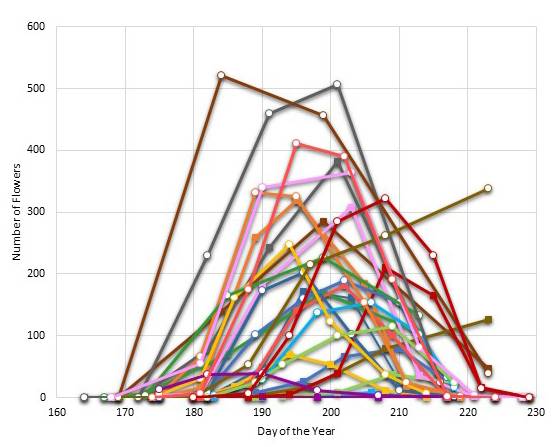
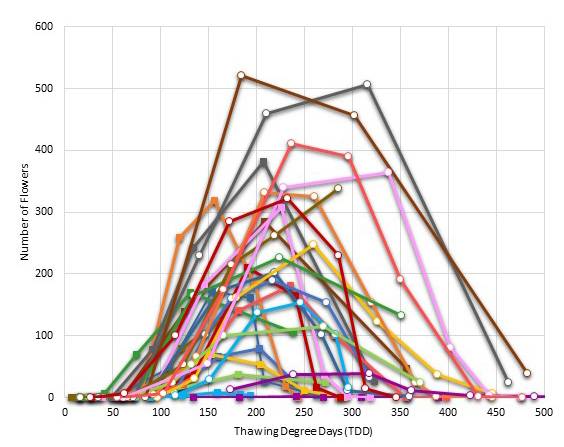
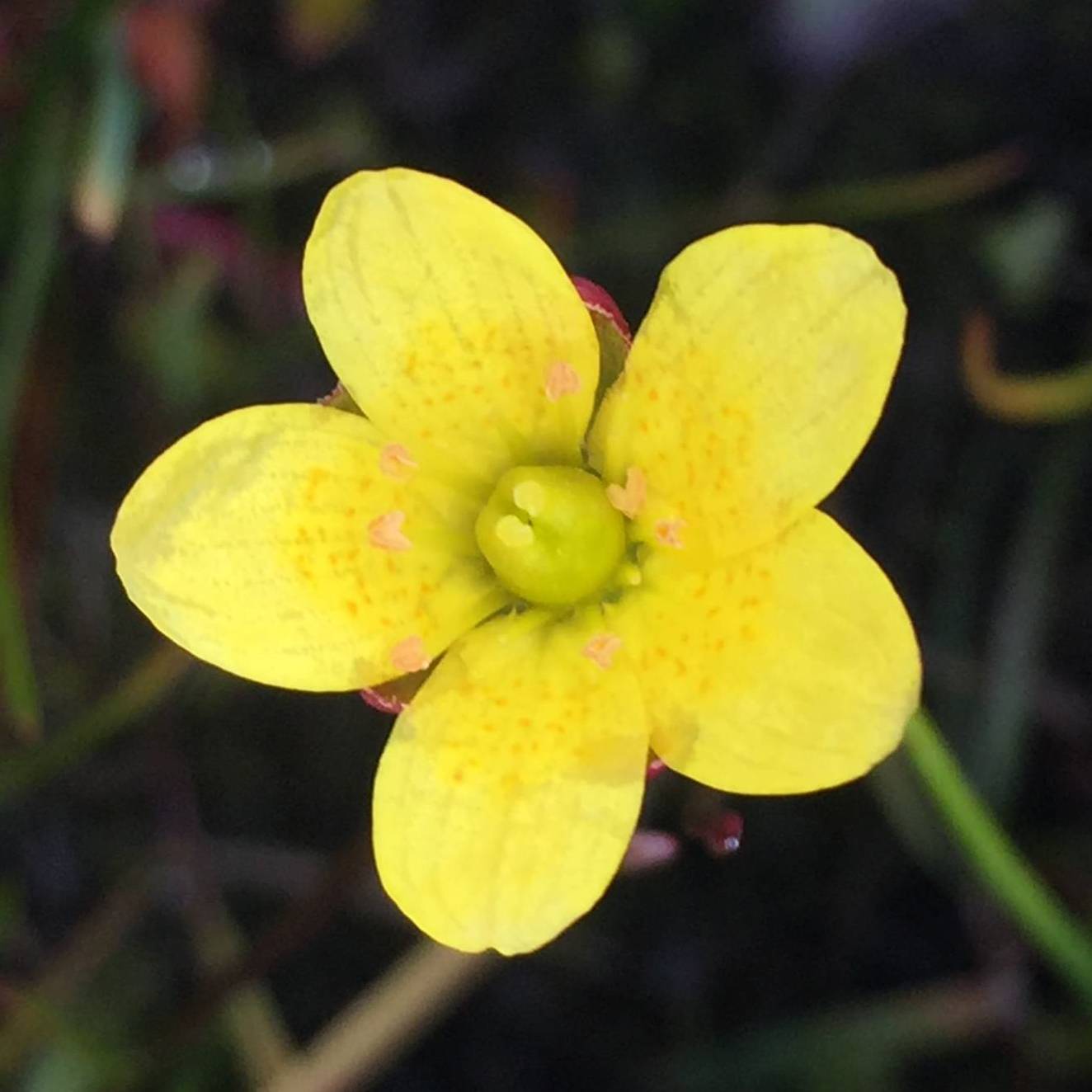
Marsh saxifrage (Saxifraga hirculus) is a pretty flower found in wet cool tundra. You can see that tracking the flowers is better with temperature (expressed as Thawing Degree Days) than Day of they year. In many years it does not finish flowering before we leave for the summer.
The figures below are counts of flowers from Utqiaġvik, Alaska. The counts are the average number of flowers in a 1 meter square plot. Note each color line represents a year and open circles are warmed plots whereas closed squares are ambient control plots.
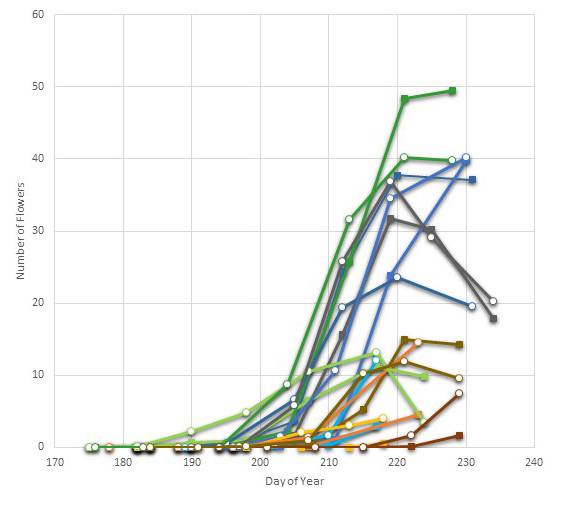
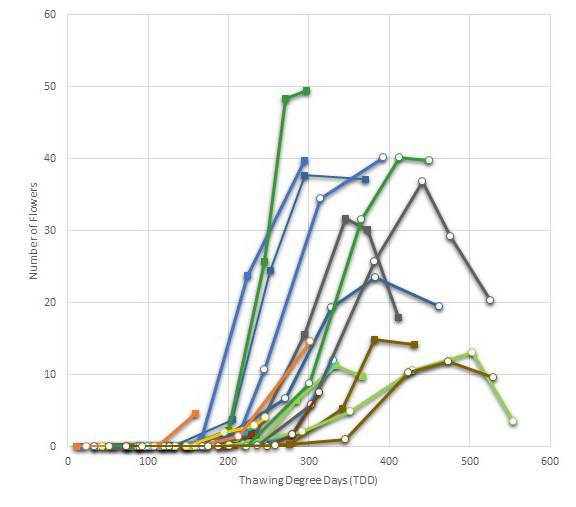
Learn more
Amanda Snyder - Overall performance of Cassiope tetragona in a climate changing environment
Jean Marie Galang - The Response of Warming on the Flowering of Arctic Plants
Clair Czadzeck - Changes in the Frequency of Flowering in Forbs Over Time
Related Papers
Collins, C.G., S.C. Elmendorf, R.D. Hollister, G.H.R. Henry, K. Clark, A.D. Bjorkman, I.H. Myers-Smith, J.S. Prevéy, I.W. Ashton, J.J. Assmann, J.M. Alatalo, M. Carbognani, C. Chisholm, E.J. Cooper, C. Forrester, I.S. Jónsdóttir, K. Klanderud, C.W. Kopp, C. Livensperger, M. Mauritz, J.L. May, U. Molau, S.F. Oberbauer, E. Ogburn, Z.A. Panchen, A. Petraglia, E. Post, C. Rixen, H. Rodenhizer, E.A.G. Schuur, P. Semenchuk, J.G. Smith, H. Steltzer, Ø. Totland, M.D. Walker, J.M. Welker, and K.N. Suding. 2021. Experimental warming differentially affects vegetative and reproductive phenology of tundra plants. Nature Communications 12:3442. 10.1038/s41467-021-23841-2.
Elmendorf, S.C., and R.D. Hollister. 2023. Limits on phenological response to high temperature in the Arctic. Scientific Reports 13:208. 10.1038/s41598-022-26955-9.
Prevéy, J., M. Vellend, N. Rüger, R.D. Hollister, A.D. Bjorkman, I.H. Myers‐Smith, S.C. Elmendorf, K. Clark, E.J. Cooper, B. Elberling, A.M. Fosaa, G.H.R. Henry, T.T. Høye, I.S. Jónsdóttir, K. Klanderud, E. Lévesque, M. Mauritz, U. Molau, S.M. Natali, S.F. Oberbauer, Z.A. Panchen, E. Post, S.B. Rumpf, N.M. Schmidt, E.A.G. Schuur, P.R. Semenchuk, T. Troxler, J.M. Welker, and C. Rixen. 2017. Greater temperature sensitivity of plant phenology at colder sites: implications for convergence across northern latitudes. Global Change Biology 23:2660–2671. 10.1111/gcb.13619.
Prevéy, J.S., C. Rixen, N. Rüger, T.T. Høye, A.D. Bjorkman, I.H. Myers-Smith, S.C. Elmendorf, I.W. Ashton, N. Cannone, C.L. Chisholm, K. Clark, E.J. Cooper, B. Elberling, A.M. Fosaa, G.H.R. Henry, R.D. Hollister, I.S. Jónsdóttir, K. Klanderud, C.W. Kopp, E. Lévesque, M. Mauritz, U. Molau, S.M. Natali, Steven.F. Oberbauer, Z.A. Panchen, E. Post, S.B. Rumpf, N.M. Schmidt, E. Schuur, P.R. Semenchuk, J.G. Smith, K.N. Suding, Ø. Totland, T. Troxler, S. Venn, C.-H. Wahren, J.M. Welker, and S. Wipf. 2019. Warming shortens flowering seasons of tundra plant communities. Nature Ecology & Evolution 3:45–52. 10.1038/s41559-018-0745-6.

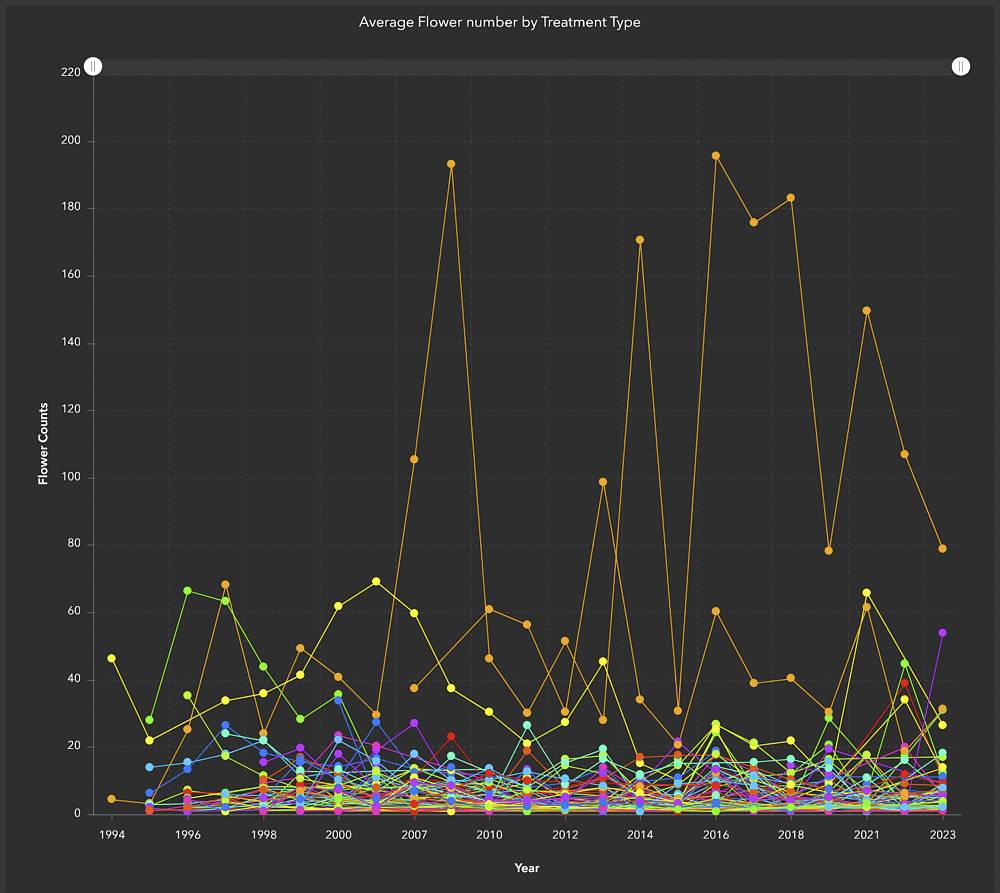


[1751826286].jpg)